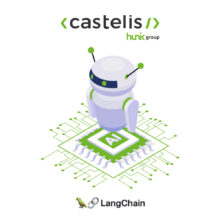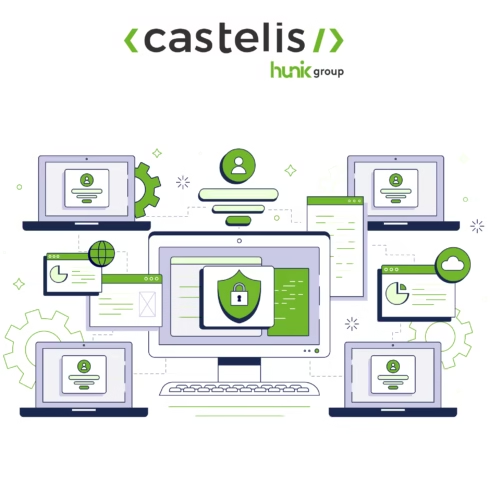
Overview of essential cybersecurity solutions for a proactive SOC
A Security Operations Center (SOC) cannot be effective without the right cybersecurity solutions. Threat monitoring, proactive detection, incident response: each tool plays a key role in protecting businesses from increasingly sophisticated attacks.
An effective SOC relies on a set of cybersecurity solutions designed to monitor, detect, and neutralize cyber threats. Among these tools, some are essential:
- SIEM (Security Information and Event Management), which centralizes and correlates logs to identify security incidents.
- EDR (Endpoint Detection and Response), which protects endpoints from advanced attacks.
- Next-generation firewall (NGFW), which filters and blocks intrusion attempts.
- Advanced antivirus, which provides basic protection against malware.
However, in the face of the constantly evolving threats, a modern SOC must go beyond these classic tools. Solutions like SOAR (Security Orchestration, Automation and Response), XDR (Extended Detection and Response), and NDR (Network Detection and Response) bring automation and advanced intelligence for rapid response to cyberattacks.
In this article, we offer you a comprehensive overview of cybersecurity solutions for SOCs, detailing their features, benefits, and integrations. Discover how to optimize your SOC for enhanced and proactive protection against threats!
Need a high-performing SOC? Explore the key solutions for effective cybersecurity now and contact us for a managed SOC. 🚀
Understanding the Basics of an SOC
A Security Operations Center (SOC) is the operational heart of a company’s cybersecurity. It brings together a team of experts and a set of tools dedicated to network monitoring, incident management, and threat detection. Its main goal is to anticipate, identify, and neutralize cyberattacks before they cause damage.
Roles and Objectives of an SOC
The role of an SOC is not limited to reacting to cyberattacks. Its true challenge is to detect and prevent threats before they exploit system vulnerabilities.
Threat Detection and Incident Response
With tools such as SIEM, EDR, and XDR, an SOC continuously analyzes security events to identify abnormal behaviors. When a threat is detected, the SOC team intervenes by neutralizing the attack and minimizing its impact on the organization.
Example: A detected intrusion attempt on a server can be blocked instantly using a next-generation firewall (NGFW) coupled with behavioral analysis.
Continuous Network Monitoring and Suspicious Behavior Analysis
An SOC monitors data flows and network connections 24/7 to spot any suspicious activity. This includes detection of lateral movements, abnormal connections, and data exfiltration attempts.
NDR (Network Detection and Response) solutions are particularly useful for analyzing network traffic and detecting advanced attacks like APT (Advanced Persistent Threats).
Current Challenges for SOCs
The rapid evolution of cyber threats forces SOCs to adapt and modernize their monitoring and response methods.
Increase in AI-Based Attacks
Cybercriminals today exploit artificial intelligence (AI) to automate their attacks, making detection more complex. For example, evolving malware can change its signature to avoid traditional detections.
In response, SOCs must also integrate AI-based cybersecurity solutions capable of identifying anomalies by analyzing user and machine behavior in real-time.
Automation with SOAR to Lighten Analyst Workload
The increasing volume of security alerts creates a workload overload for SOC analysts, who must deal with a huge volume of incidents every day. To optimize their efficiency, many companies are adopting SOAR (Security Orchestration, Automation and Response) solutions.
SOAR allows incident management automation by:
✔ Correlating alerts to avoid false positives.
✔ Running automated playbooks to block a detected threat immediately.
✔ Optimizing response time by reducing human intervention in repetitive tasks.
Example: When a ransomware is detected on an endpoint, SOAR can automatically isolate the infected device, perform an in-depth analysis, and notify the SOC team.
📌 Recommended Infographic: Architecture Diagram of a High-Performing SOC showing the interconnection between SIEM, EDR, XDR, SOAR, and NDR.
A modern SOC is no longer limited to simple monitoring: it must be proactive, automated, and capable of adapting to emerging threats to ensure robust and effective cybersecurity.
We help you optimize your SOC. Schedule a meeting!
Essential Tools for a High-Performing SOC (Must-Have)
A Security Operations Center (SOC) relies on an ecosystem of cybersecurity tools that ensure proactive threat detection, security event analysis, and incident response. Some of these tools are essential to guarantee the protection of IT infrastructures and must be deployed as a priority.
Here are the four technological pillars of a high-performing SOC:
- SIEM (Security Information and Event Management): centralizing and analyzing logs to detect anomalies.
- EDR (Endpoint Detection and Response): advanced protection of endpoints against targeted attacks.
- Firewall: the first line of defense against intrusions.
- Antivirus: essential protection against malware, complementing other advanced solutions.
SIEM (Security Information and Event Management): A Central Tool for Security Supervision
The SIEM is a fundamental tool in an SOC, allowing to aggregate and analyze logs from multiple sources (servers, applications, network devices, endpoints…). Its main role is to detect anomalies and security incidents by correlating events in real-time.
Key Features of SIEM
- Log collection and aggregation: centralizing events from various devices (firewall, EDR, servers…).
- Event correlation: identifying suspicious patterns from multiple data sources.
- Anomaly detection: automatic alert when unusual behavior occurs.
- Incident response automation (integrated with SOAR).
- Regulatory compliance: helping companies comply with standards like ISO 27001, NIST, GDPR.
Comparison of Popular SIEM Solutions
| SIEM Solution | Advantages | Disadvantages |
|---|---|---|
| Splunk | Powerful interface, advanced search engine | High cost, requires expert configuration |
| IBM QRadar | Excellent event correlation, suitable for large enterprises | Complex deployment, high resource consumption |
| Microsoft Sentinel | Native integration with Azure and Microsoft 365, built-in AI | Less effective for hybrid environments |
📌 Recommendation: Companies should choose a SIEM based on their size and IT infrastructure (and possibly their budget).
EDR (Endpoint Detection and Response): Advanced Protection for Endpoints
How EDR Protects Endpoints Against Sophisticated Attacks?
Modern attacks often target endpoints (workstations, servers, mobile devices). Unlike traditional antiviruses, an EDR is capable of analyzing endpoint behavior and identifying advanced attacks such as ransomware, zero-day threats, or stealthy malware.
Differences Between Antivirus and EDR
| Criteria | Antivirus | EDR |
|---|---|---|
| Detection Method | Signatures & Heuristic | Behavioral Analysis & Detection of Unknown Threats |
| Response Capability | Removal of malicious file | Endpoint isolation, rollback of modified files |
| Automation | Low | High (detection, response, automatic alerts) |
Real-Life Example: An EDR Blocks a Ransomware Attack
A ransomware begins encrypting an employee’s files. A traditional antivirus detects nothing because the malware’s signature is unknown. However, the EDR observes abnormal activity on the file system and automatically blocks the process, preventing the infection. The administrator is alerted and can immediately restore the files using the EDR’s rollback feature.
Recommendation: An EDR is essential for any company seeking proactive cybersecurity and the ability to respond quickly to advanced threats.
Firewall: The Barrier Against Intrusions
Why is a Firewall Essential in a SOC?
A firewall is the first line of defense against network attacks. It allows for traffic filtering and blocks intrusion attempts by enforcing precise security rules.
Types of Firewalls and How They Work
- Hardware Firewall: Dedicated appliance integrated into the network infrastructure.
- Software Firewall: Solution deployed on a server or endpoint.
- NGFW (Next-Generation Firewall): Advanced firewall with features like SSL inspection, IDS/IPS, and behavioral analysis.
Importance of Integrating Firewall with SIEM and EDR
A modern firewall must be connected to the SIEM and EDR for automated detection and response. Example:
- A suspicious activity is detected on an endpoint by the EDR.
- The EDR alerts the SIEM, which correlates with other network events.
- The firewall automatically blocks the associated malicious connections.
Practical Guide: How to Configure an Effective Firewall?
- Enable SSL inspection to analyze encrypted traffic.
- Use dynamic blocklists (Threat Intelligence).
- Implement strict access rules based on users and applications.
Recommendation: A NGFW firewall is essential for controlling network traffic and preventing attacks before they reach endpoints.
Antivirus: Is It Still Useful? The Evolution of Antivirus Against Modern Threats
Once a central tool in cybersecurity, antivirus alone is no longer sufficient to protect IT infrastructures from modern threats. Cybercriminals now use advanced techniques (polymorphic malware, fileless attacks) that easily bypass signature-based detections.
Antivirus vs Advanced Solutions (EDR/XDR)
| Solution | Classic Detection | Behavioral Detection | Threat Response |
|---|---|---|---|
| Antivirus | YES | NO | Removal of infected files |
| EDR | YES | YES | Automatic isolation, rollback |
| XDR | YES | YES | Multi-source correlation, automated response |
Complementarity with EDR and XDR
Although limited against advanced threats, an antivirus remains useful for basic threats like known malware or spyware. However, integration with an EDR or XDR allows for much more effective detection and response.
Recommendation: An antivirus alone is insufficient. It must be combined with an EDR or XDR for complete protection.
Conclusion: A Proactive SOC Requires at Least a SIEM, EDR, Firewall, and Antivirus
These four essential tools form the foundation of a high-performing SOC. The SIEM, coupled with solutions like EDR, firewall, and antivirus, enables proactive threat detection and automated incident response.
Next Step: Discover Complementary Tools That Optimize and Automate a SOC (SOAR, XDR, NDR, etc.)
Complementary Tools to Optimize a SOC (Nice-to-Have)
While an effective SOC relies on essential tools such as SIEM, EDR, and firewalls, it can be significantly optimized with complementary solutions that enhance automation, advanced detection, and threat response.
Although these tools are not indispensable for a basic SOC, they provide time savings, better responsiveness, and a reduction in the risk of human error.
Here are five key technologies that help elevate a SOC’s protection level:
- SOAR (Security Orchestration, Automation, and Response): Automates incident response tasks.
- NDR (Network Detection and Response): Detects threats by analyzing network traffic.
- XDR (Extended Detection and Response): Advanced detection and response by correlating multiple data sources.
- Vulnerability Management: Proactively identifies and fixes vulnerabilities.
- Threat Intelligence and Behavioral Analysis: Detects unknown threats using artificial intelligence.
SOAR (Security Orchestration, Automation, and Response): Automating Incident Response to Reduce Reaction Time
One of the greatest challenges in a SOC is managing the volume of security alerts. SOC analysts are often overwhelmed and must process a large number of false positives. SOAR allows for the automation and orchestration of incident responses, reducing response time and easing the workload of teams.
Main Features of SOAR
- Automation of repetitive tasks (e.g., IP blocking, antivirus scanning, quarantining).
- Intelligent correlation of alerts to eliminate false positives.
- Predefined response playbooks for common scenarios (ransomware, phishing, network intrusion).
Use Case: Automated Response to a Phishing Attack
- An employee reports a suspicious email.
- SOAR checks the URL in the email by querying a Threat Intelligence database.
- If the URL is malicious, SOAR automatically blocks access to the site and isolates the email.
- An alert is sent to SOC analysts with a detailed incident report.
Recommendation: SOAR is particularly useful for companies dealing with a high volume of incidents and seeking to optimize their SOC through automation.
NDR (Network Detection and Response): Monitoring and Analyzing Network Traffic to Identify Advanced Threats
NDR solutions allow for real-time analysis of network traffic to identify abnormal behaviors that could indicate an attack. Unlike firewalls, which apply fixed rules, NDR uses artificial intelligence to detect anomalies invisible to traditional tools.
Main Features of NDR
- Behavioral analysis of network traffic (detecting lateral movement).
- Identification of zero-day threats and unknown attacks.
- Correlation with other SOC tools (SIEM, SOAR, XDR) for a rapid response.
Example: Detecting a Zero-Day Attack
- An attacker compromises an endpoint and attempts lateral movement.
- The NDR detects an anomaly in internal connections and generates an alert.
- The alert is sent to the SIEM, which correlates with other suspicious events.
- The SOC immediately blocks the compromised endpoint’s access to the network.
Recommendation: NDR is essential for large infrastructures where in-depth network monitoring is required.
XDR (Extended Detection and Response): A Unified View for Better Detection and Response
XDR (Extended Detection and Response) is an evolution of EDR that allows collecting and correlating data from multiple sources (endpoints, network, cloud, emails, identities).
Unlike SIEM and EDR, which operate separately, XDR centralizes detections to offer a faster and more effective response.
Advantages of XDR Compared to Other Solutions
| Solution | Endpoint Detection | Network Detection | Multi-Source Correlation | Automation |
|---|---|---|---|---|
| EDR | ✅ Yes | ❌ No | ❌ No | ✅ Partial |
| SIEM | ❌ No | ✅ Yes | ✅ Yes | ❌ No |
| XDR | ✅ Yes | ✅ Yes | ✅ Yes | ✅ Yes |
Recommendation: XDR is particularly suited for companies seeking advanced protection without multiplying tools.
Vulnerability Management: Identify and Fix Flaws Before They Are Exploited
A SOC is not limited to monitoring and responding to incidents. It must also ensure proactive cybersecurity by identifying vulnerabilities before they are exploited.
Features of Vulnerability Management Tools
- Automated scanning for vulnerabilities on endpoints, servers, and applications.
- Prioritization of vulnerabilities based on their criticality.
- Correction recommendations (patches, secure configurations).
Popular Tools:
- Tenable Nessus: vulnerability scanning across the entire IT system.
- Qualys: cloud-based scanning for systems and web applications.
Recommendation: Vulnerability management is essential to anticipate attacks, especially for companies with strict compliance requirements.
Threat Intelligence and Behavioral Analysis: Detect Unknown Threats Using Artificial Intelligence
Threat Intelligence and behavioral analysis tools help anticipate attacks by analyzing trends and tactics of cybercriminals.
Main Features
- Database of known threats (MITRE ATT&CK, IOC, malware signatures).
- Behavioral analysis to identify suspicious activities without known signatures.
- Detection of advanced attacks such as APT (Advanced Persistent Threats).
Example: Stopping an APT Attack with Behavioral Analysis
- A legitimate user begins to download an unusual volume of sensitive files.
- Behavioral analysis identifies a deviation from their usual activity.
- An alert is sent to the SOC, which verifies and blocks the action before a data leak occurs.
Recommendation: A modern SOC must integrate Threat Intelligence to protect against unknown threats and better prioritize security incidents.
Conclusion: Time Savings, Better Reactivity, and Reduced Human Error Risk
These complementary tools help optimize a SOC by improving automation, advanced threat detection, and incident response.
How to Integrate and Optimize These Solutions in a SOC?
The effectiveness of a Security Operations Center (SOC) does not only depend on selecting the right tools but also on their integration and orchestration. A well-structured SOC should allow for rapid threat detection, effective event correlation, and automated incident response.
In this section, we will explore different integration approaches, analyze real-world SOC architecture cases, and offer best practices to optimize an automated and efficient SOC.
Modular vs Integrated Approach: Should Everything Be Connected or Function by Modules?
There are two main approaches for structuring a SOC:
The Modular Approach (by Independent Modules)
- Each solution (SIEM, EDR, firewall, SOAR, XDR…) is deployed separately and operates independently.
- Advantage: More flexibility in tool selection (e.g., a Splunk SIEM + a CrowdStrike EDR + a Palo Alto Cortex XSOAR SOAR).
- Disadvantage: More complexity in integration and data flow management.
Use Case: A company with an internal SOC and an expert team may prefer a modular approach to select the best solutions tailored to their environment.
The Integrated Approach (Interconnected Ecosystem)
-
- The tools are designed to work together, making event correlation and response automation easier.
- Advantage: Native interoperability and simplified management (e.g., a SOC based on Microsoft Sentinel (SIEM), Defender for Endpoint (EDR), and Defender XDR).
- Disadvantage: Less choice of solutions, risk of being locked into a single vendor.
Use Case: A company seeking centralized and automated management may prefer an integrated approach with a turnkey SOC, interconnecting SIEM, SOAR, and XDR.
Recommendation: Modular or Integrated?
- Large enterprises with an internal SOC → Modular approach for more customization.
SMEs/ETIs seeking an effective SOC with less maintenance → Integrated approach for more simplicity.
Examples of Successful SOC Architectures in Companies
Case 1: A Multinational with an Advanced Modular SOC
Problem: The company was experiencing a high volume of incidents but had difficulty correlating alerts.
Solution Implemented:
- SIEM: Splunk (log correlation and analysis).
- EDR: CrowdStrike Falcon (advanced endpoint protection).
- SOAR: Cortex XSOAR (SOC task automation).
- NDR: Darktrace (network anomaly detection).
Result:
- 50% reduction in incident response time thanks to SOAR automation.
- Effective threat correlation with SIEM + EDR + NDR integration.
Case 2: An SME Securing Its SOC with an Integrated Approach
Problem: The company wanted complete SOC protection without multiple complex integrations.
Solution Implemented:
- SIEM & SOAR: Microsoft Sentinel.
- XDR: Microsoft Defender (endpoint + network + email correlation).
- NGFW Firewall: Palo Alto (advanced perimeter protection).
Result:
- 60% reduction in false positives thanks to XDR.
- Unified visibility of alerts without heavy maintenance.
Automated SOC: How to Structure an Optimal Architecture?
Automation is a key factor in improving SOC efficiency and reducing analysts’ workload. A modern SOC architecture relies on three interconnected components:
- Log collection and correlation → SIEM (e.g., Splunk, Sentinel, QRadar).
- Incident detection and response → EDR/XDR/NDR (e.g., CrowdStrike, Defender XDR, Darktrace).
- Orchestration and automation → SOAR (e.g., Palo Alto Cortex XSOAR, IBM Resilient).
Optimal SOC Architecture with SIEM, SOAR, and XDR Integration: Recommended Diagram
- SIEM collects and correlates security events.
- XDR analyzes attacks by combining multiple sources (endpoint, network, cloud).
- SOAR orchestrates and automates incident response.
Recommendations for Successful Integration
- Define clear workflows: Prioritize alerts and automate responses with SOAR.
- Interconnect the tools: Facilitate information exchange between SIEM, EDR, SOAR, and XDR.
- Standardize playbooks: Create automated response scenarios for common threats.
Future Trends in SOC Technologies
The cybersecurity landscape is evolving rapidly, and the Security Operations Centers (SOC) must adapt to face new threats and emerging challenges. Artificial Intelligence (AI), the Zero Trust model, and the migration to the cloud are profoundly transforming how SOCs detect, analyze, and neutralize cyberattacks.
In this section, we explore three major trends that will shape the SOCs of the future and their role in advanced, automated cybersecurity.
AI at the Heart of Tomorrow’s SOCs: AI-Driven SOC
The integration of AI and machine learning into SOCs allows for automating and accelerating threat detection. Instead of relying solely on static rules, an AI-based SOC can analyze behaviors in real time, identify anomalies, and even anticipate attacks before they happen.
Advantages of AI for SOCs
- Reduction of false positives through advanced behavioral analysis.
- Automation of incident responses via learning algorithms.
- Faster detection of zero-day threats by comparing known attack patterns.
Concrete Example: An AI-powered SOC can detect suspicious activity on a user account (unusual login, attempted transfer of critical files) and trigger an automated response before an analyst even sees the alert.
Recommendation: Adopting AI-powered cybersecurity solutions like Darktrace, IBM Watson for Cybersecurity, or Google Chronicle significantly improves SOC responsiveness and accuracy.
Zero Trust and SASE: The Future of Secure Infrastructures
What is Zero Trust in Cybersecurity?
The Zero Trust model is based on a simple principle: never trust, always verify. Unlike traditional approaches where internal users and devices are considered trusted, Zero Trust requires strict authentication and continuous monitoring of all access.
Why Zero Trust is Crucial for SOCs
- Protection against internal attacks: No access is granted by default, limiting the spread of threats.
- Multi-factor authentication (MFA) and network segmentation: Strengthens protection of sensitive data.
- Continuous monitoring: Dynamic verification of each user and device request.
Zero Trust Application Example: A company adopts a micro-segmentation solution to limit access to critical resources based on the user’s role and connection context.
The Rise of SASE (Secure Access Service Edge)
SASE combines Zero Trust, SD-WAN, and cloud security to provide unified and flexible protection for businesses. With the rise of remote work and cloud infrastructures, SASE has become an essential solution for securing access to SaaS applications, hybrid clouds, and VPNs.
Recommendation: Adopting solutions like Zscaler, Palo Alto Prisma Access, and Cisco Umbrella facilitates the implementation of Zero Trust and SASE in a modern SOC.
The Impact of the Cloud on SOCs and New Cybersecurity Challenges
The Massive Migration of SOCs to the Cloud
With digital transformation, more and more companies are migrating their traditional SOCs to cloud infrastructures. This shift brings numerous advantages:
- Scalability and flexibility: Ability to handle a growing volume of security data.
- Cost reduction in infrastructure by eliminating on-premise servers.
- Better collaboration and secure remote access for distributed SOC teams.
New Cybersecurity Challenges in the Cloud
- Increase in attacks on cloud environments: Cybercriminals target cloud service configuration flaws and poorly protected accounts.
- Complexity of multi-cloud management: Companies using AWS, Azure, and Google Cloud must unify security monitoring.
- Reduced visibility of IT assets: A cloud SOC must have a modern SIEM and XDR optimized for the cloud to achieve effective threat detection.
Example: A company migrating its SOC to the cloud adopts Microsoft Sentinel to correlate security events across Azure, AWS, and its internal network.
Recommendation: Companies must strengthen their cloud SOC with tailored security solutions like Palo Alto Prisma Cloud, Microsoft Defender for Cloud, or AWS Security Hub.
Conclusion and Best Practices for a Proactive SOC
A high-performing SOC relies on a combination of essential and complementary tools to ensure proactive threat detection, continuous network monitoring, and rapid incident response.
Summary of Essential and Complementary Solutions
✔ Must-have tools for an effective SOC:
- SIEM: Centralization and correlation of logs to identify incidents.
- EDR: Advanced endpoint protection against sophisticated cyberattacks.
- Firewall (NGFW): Blocking network threats and filtering malicious traffic.
- Antivirus: Detection and removal of known malware.
✔ Complementary tools to optimize cybersecurity:
- SOAR: Automating incident responses for a more reactive SOC.
- NDR: Monitoring and detecting anomalies on the network.
- XDR: Advanced threat correlation across multiple environments (endpoint, cloud, email, network).
- Vulnerability Management: Proactively identifying weaknesses to fix.
- Threat Intelligence: Behavioral analysis and anticipation of emerging threats.
Recommendations Based on Company Size and Industry
SMEs and Mid-sized Enterprises (ETI):
- Prioritize SIEM + EDR + Firewall for effective basic protection.
- Gradually complement with SOAR and XDR to automate responses.
Large Enterprises and Sensitive Industries (Finance, Healthcare, Defense, etc.):
- Advanced SOC with SIEM, SOAR, XDR, and NDR for proactive cybersecurity.
- Enhance with Threat Intelligence tools and vulnerability management.
Take Action!
An effective SOC requires continuous evaluation of its security posture. Are you sure your SOC is optimized to face cyber threats?
🚀 Conduct an audit of your SOC now and secure your business effectively!
📌 FAQ: Your Questions on SOC Solutions
SIEM vs SOAR vs XDR: Which Solution to Choose?
These three tools have distinct but complementary functions:
- SIEM → Centralizes and correlates logs to detect incidents.
- SOAR → Automates incident response and orchestrates processes.
- XDR → Expands detection and response by analyzing multiple sources (endpoints, network, cloud, email).
💡 Recommendation: SIEM is essential for monitoring, SOAR for automation, and XDR for more comprehensive detection.
Is EDR Enough to Protect a Company Against Cyberattacks?
An EDR (Endpoint Detection and Response) is essential for protecting endpoints (PCs, servers), but it does not cover all attacks.
❌ EDR Limitations:
- Does not detect network attacks (need NDR).
- Does not correlate logs from the entire IT environment (need SIEM).
✔ Complete Solution: EDR + SIEM + NGFW Firewall for optimized cybersecurity.
How to Choose Between an In-house SOC and an Outsourced SOC?
- In-house SOC → For large companies with a dedicated cybersecurity team.
- Outsourced SOC (MSSP) → For SMEs / ETIs that want a turnkey service with 24/7 supervision.
💡 Factors to consider: Budget, internal expertise, desired level of monitoring.
What Criteria Should Be Used to Choose a SIEM Tool?
- Advanced event correlation capabilities.
- Integration with EDR, SOAR, and third-party tools.
- Ease of use and management of false positives.
- Scalability and cost (on-premise vs cloud).
📌 Example: Cloud SIEM (Microsoft Sentinel) vs On-prem SIEM (IBM QRadar).
Are AI Solutions in Cybersecurity Reliable?
✅ Advantages: Faster detection of zero-day threats, reduction of false positives, advanced behavioral analysis.
❌ Limitations: Risks of algorithmic biases, need for well-trained AI models.
💡 Recommendation: Use AI as a complement, not a replacement for SOC experts.
What’s the Difference Between NDR and XDR?
- NDR (Network Detection and Response) → Monitors network traffic and detects attacks before they reach endpoints.
- XDR (Extended Detection and Response) → Analyzes and correlates events across multiple sources (endpoints, cloud, emails, network).
📌 Ideally, both solutions are complementary for full coverage.
How to Optimize a SOC Without Breaking the Budget?
- Start with SIEM + EDR + Firewall (essential solutions).
- Add SOAR to automate time-consuming tasks.
- Use an MSSP if the cost of an in-house SOC is too high.
- Prioritize cloud solutions to limit infrastructure costs.
Is a NGFW Firewall Enough to Protect My Network?
A Next-Generation Firewall (NGFW) filters connections, but it is not sufficient against:
- Internal attacks (need SIEM + behavioral analysis).
- Advanced threats (need NDR for in-depth traffic monitoring).
💡 Recommendation: Integrate NGFW + NDR + SIEM for effective network protection.
👉 Still have questions about your SOC? Contact our experts for a personalized audit! 🚀
Voir plus de Actualités
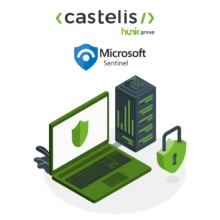
Why Microsoft Sentinel is Essential for Cyber Threat Management: A Practical Guide for CIOs
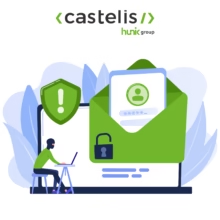
Top best practices to improve email security with DMARC
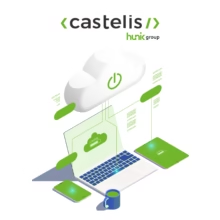
Cloudflare Zaraz Guide: Manage your third-party scripts at the Edge for better web performance
